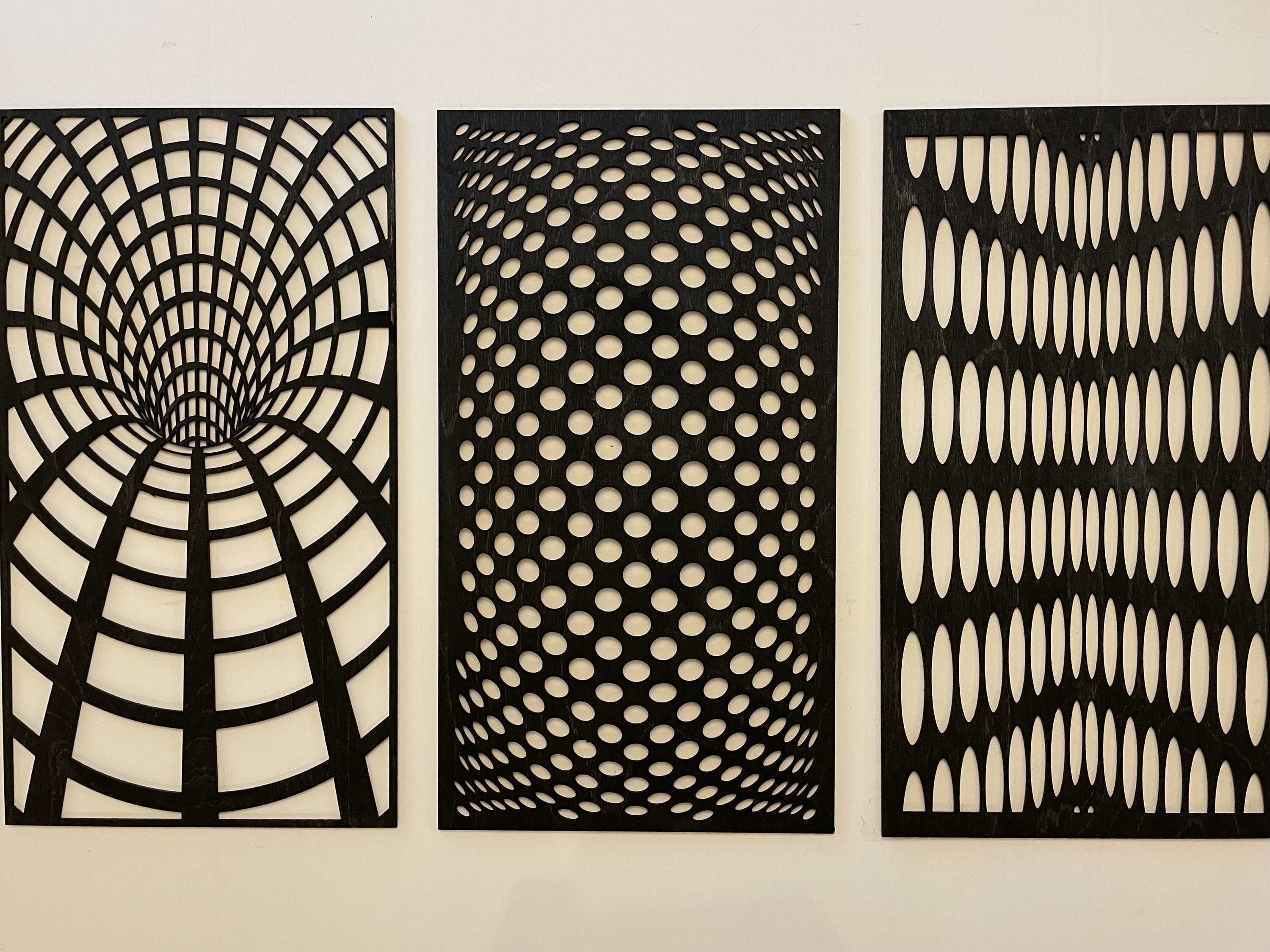What is Optical Illusion Wall Decor?
Optical illusion wall decor is a unique design element that plays with perception, creating stunning visuals that can make your space feel larger, more dynamic, or even more whimsical. These pieces often feature designs that trick the eye, drawing attention and sparking conversation.
As someone who has transformed their living space with optical illusion art, I can attest to the way it adds energy and intrigue to a room.
Types of Optical Illusion Wall Decor
1. 3D Wall Art
These pieces create the illusion of depth, making it seem as if parts of the design are coming out of or sinking into the wall.
2. Geometric Patterns
Geometric illusions play with lines and shapes, creating a visual experience that can mesmerize the viewer.
3. Anamorphic Art
This type of art requires the viewer to be in a particular position to see the intended image, offering an interactive experience.

4. Optical Prints and Paintings
These are 2D representations that still create a sense of movement or depth, often featuring bold colors and intricate designs.
Benefits of Optical Illusion Wall Decor
- Creates a focal point in any room.
- Makes small spaces feel larger.
- Adds a modern touch to your decor.
- Engages guests and sparks conversation.

How to Choose Optical Illusion Wall Decor
1. Consider Your Space
Assess the size of your room and where you want the decor to be placed. Larger pieces work well in spacious areas, while smaller designs can complement cozy nooks.
2. Match Your Style
Choose artworks that align with your overall design aesthetic. Whether it’s contemporary, minimalist, or eclectic, there are optical illusions to suit every style.

3. Color Palette
Consider the color scheme of your walls and existing furniture. Bold colors can be eye-catching, while softer tones can create a more subtle impact.
Where to Buy Optical Illusion Wall Decor
Online Retailers
Websites like Amazon, Etsy, and Wayfair offer a wide variety of optical illusion art pieces suitable for any budget.

Local Art Galleries
Visit local galleries to discover unique works by local artists, giving your decor a personal touch.
Custom Art Shops
Consider commissioning a piece from an artist who specializes in optical illusions to truly make your decor one-of-a-kind.

Pros and Cons of Optical Illusion Wall Decor
| Pros | Cons |
|---|---|
| Unique and captivating designs | Can overwhelm smaller spaces if not chosen carefully |
| Focal point in any room | May require specific placement to maximize effect |
| Engages viewers’ curiosity | Some pieces may not suit all tastes |
Personal Experience with Optical Illusion Wall Decor
When I first introduced optical illusion art into my home, I was hesitant. I wasn’t sure if it would complement my existing decor or simply stand out in an awkward way. However, after installing a stunning 3D piece above my couch, it quickly became the focal point of my living room. Friends and family often comment on it, and I love that it has sparked so many discussions about art and creativity.
Not only does it brighten up my space, but it also gives it a unique touch that reflects my personality.

Incorporating Optical Illusion Decor in Your Home
1. Living Room
A large statement piece over the sofa can create depth and bring character to a common gathering space.
2. Bedroom
Opt for softer designs that invite relaxation, potentially behind the headboard or as part of a gallery wall.
3. Office Space
Use optical illusions that inspire creativity, helping to break the monotony of a typical work environment.
FAQs About Optical Illusion Wall Decor
1. What materials are optical illusion wall decor made from?
Optical illusion decor can be found in various materials including canvas, metal, wood, and even wallpaper.
2. How can I best light optical illusion art?
Using directional lighting can enhance the depth and dimensions of the art, making the illusions more effective.
3. Can optical illusions work in outdoor spaces?
Yes, outdoor optical illusion art can add a unique flair to patios or garden areas, creating a playful and inviting atmosphere.
4. Are there specific color schemes that work best for optical illusions?
Contrasting colors often work best, as they enhance the illusionary effects and grab viewers’ attention.